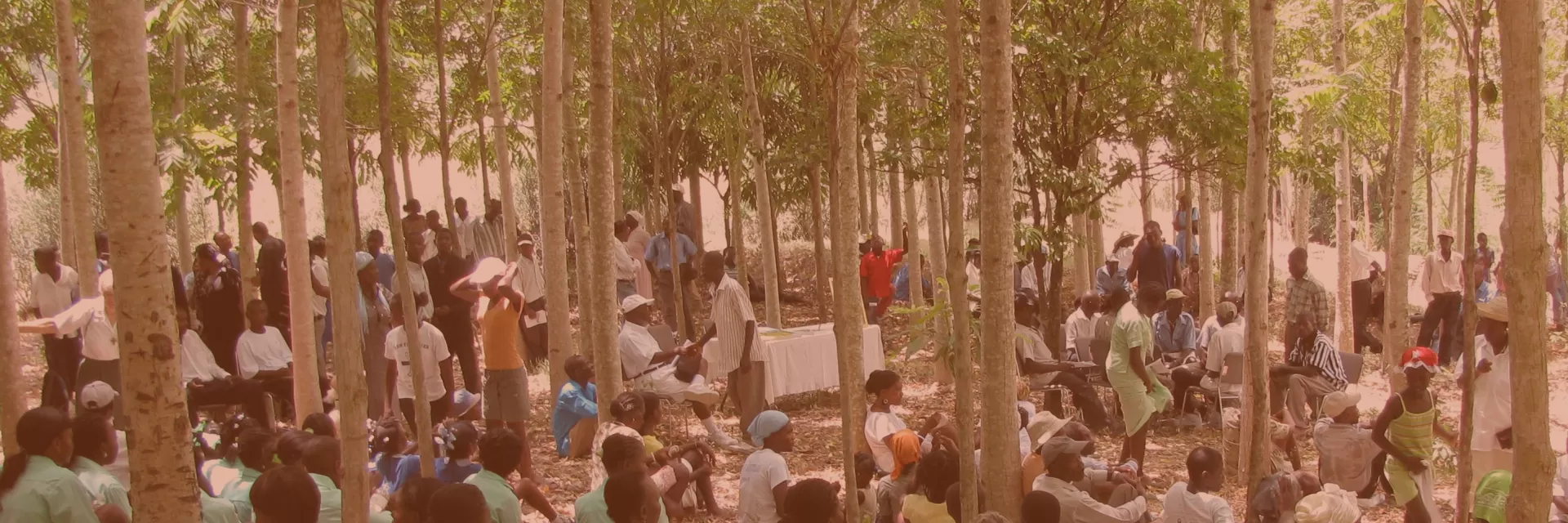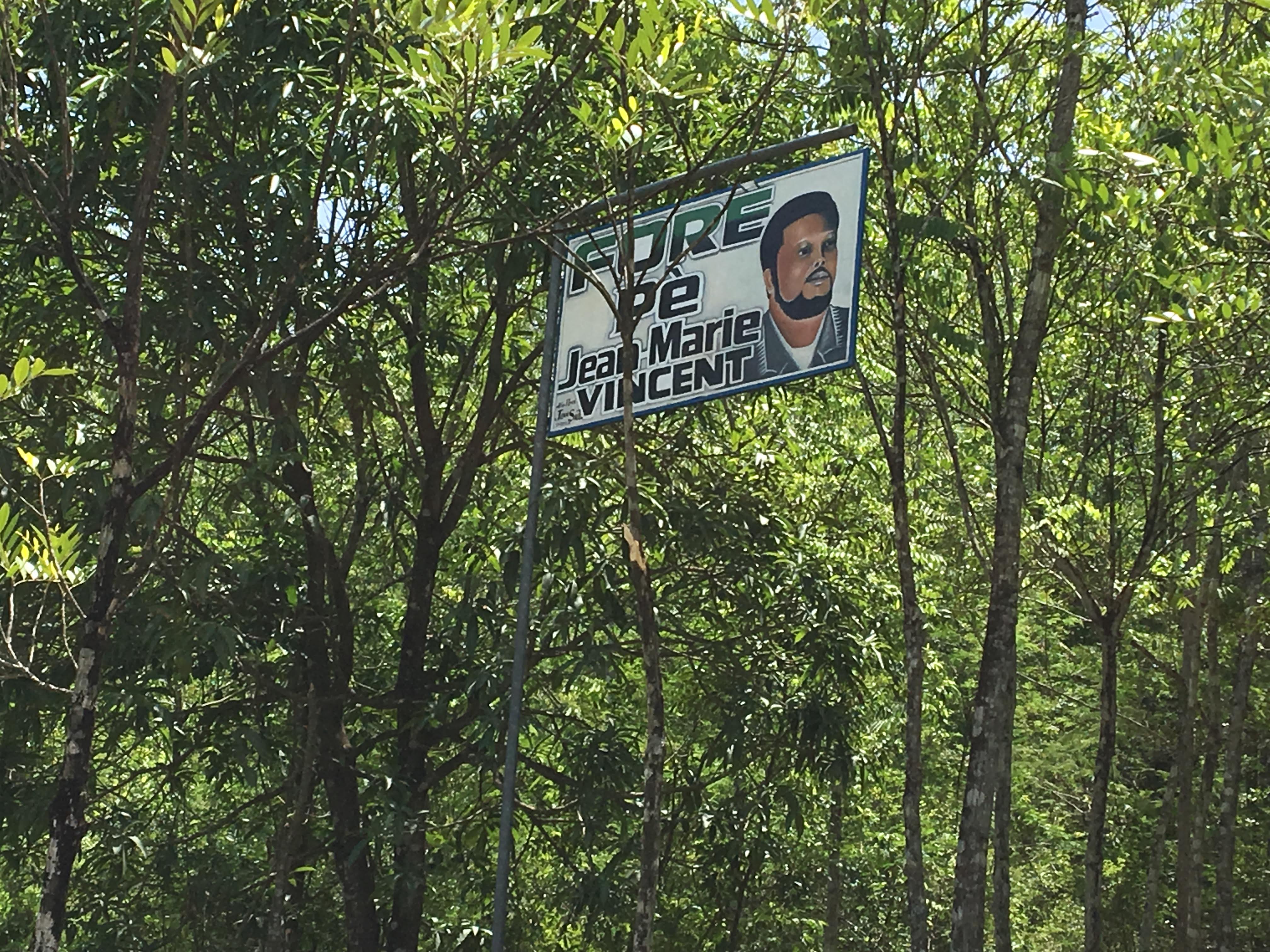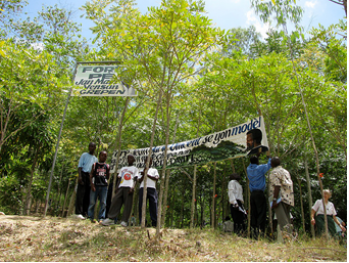Quixote Center’s work in Haiti prioritizes systemic change. Our theory of change has three aspects:
- Economic development initiatives that lead to meaningful and sustainable jobs and income for families and communities;
- Reforestation to preserve Haiti’s environment and protect the soil and watershed;
- Advocacy to promote US policies that support Haitian democracy and Haitian-led solutions to poverty, gang violence, and migration.
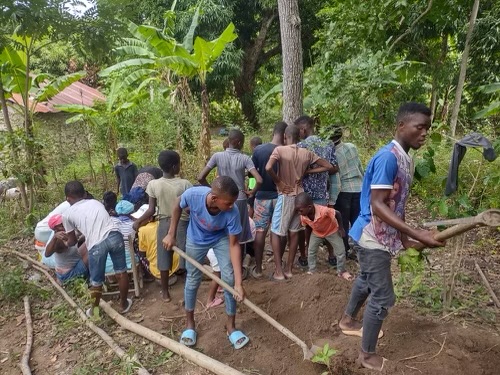
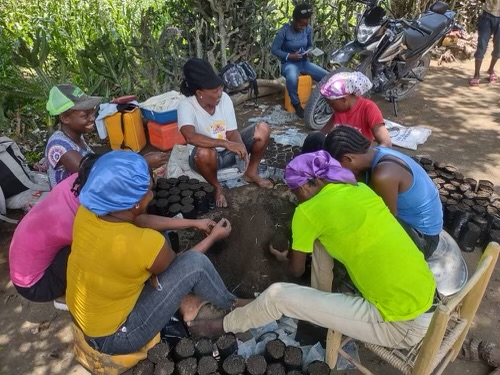
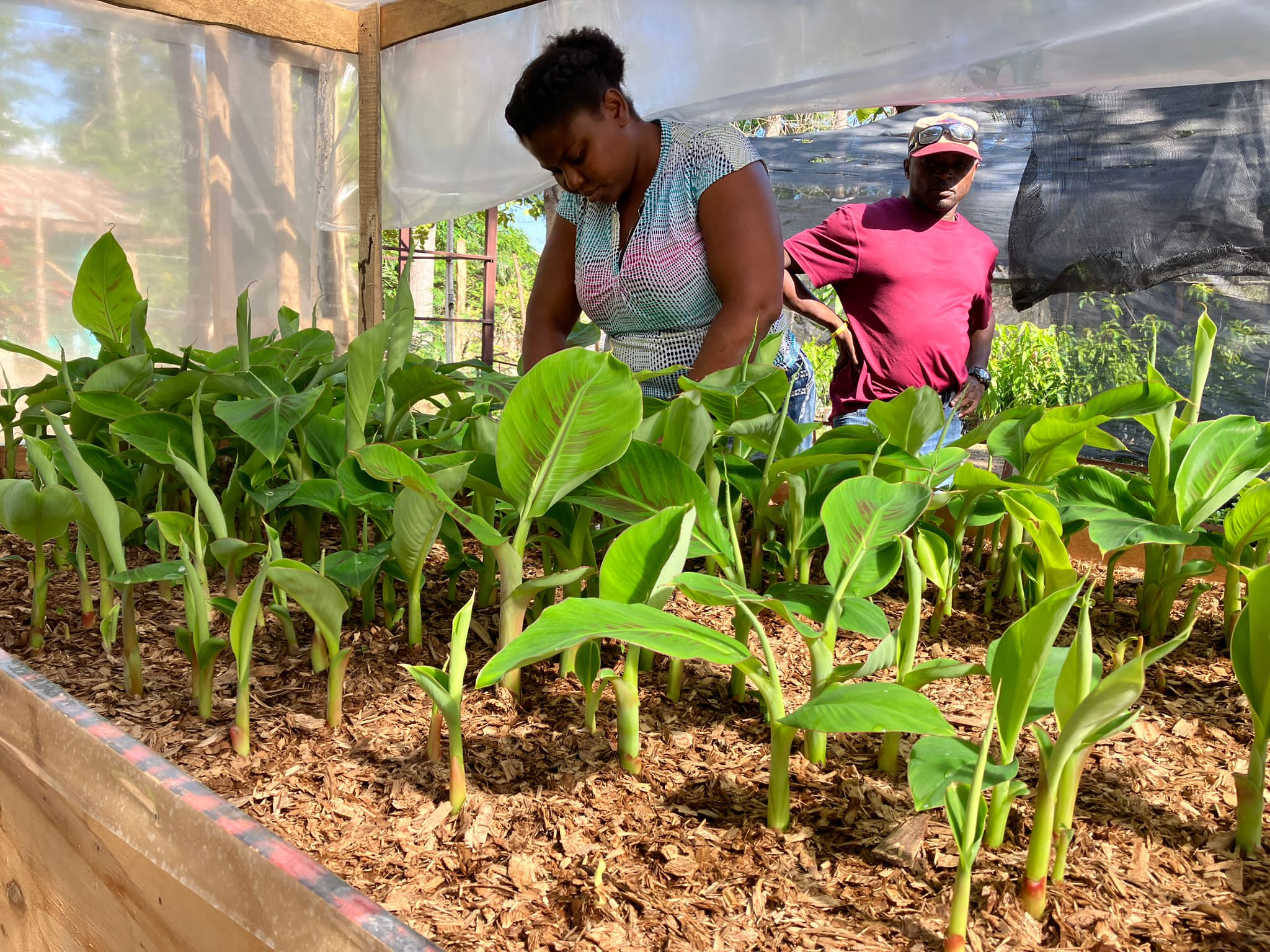
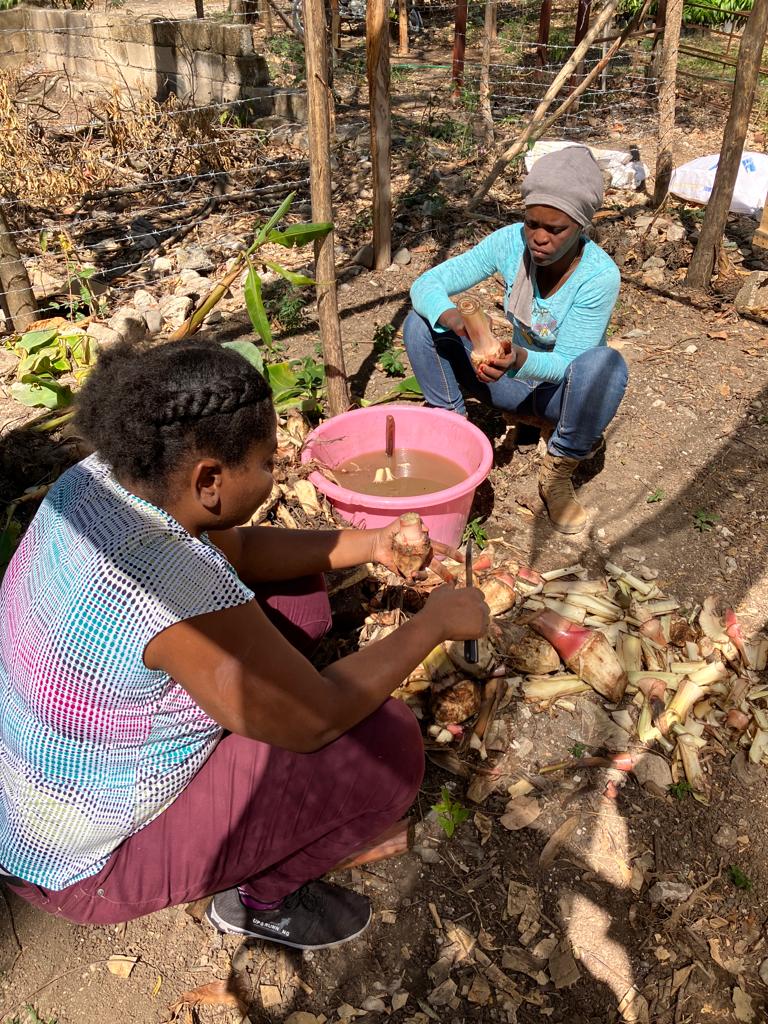
Quixote Center initially launched Haiti Reborn in 1991 during a period of renewal in Haiti, following the election of Aristide and the rise of Lavalas, a popular movement for democratic reform. The coup that ousted Aristide later that year led us to focus our efforts on speaking out against United States intervention in Haiti. US foreign policy as well as development aid still has enormous influence over Haiti and its future. US NGOs and churches also funnel significant funds into Haiti, leading many Haitians to dub their country “the republic of NGOs.”
The Quixote Center partners with Haitian organizations to support smallholder farmers to build sustainable livelihoods from agriculture and reforestation. The Jean Marie Vincent Formation Center located in Grepen, Haiti, is our primary partner in the north while in the south DCCH, the Christian Community Development in Haiti is our main partner in Gouin, Les Cayes.
There is a major humanitarian crisis that is worsening the medical, economic, housing, security and other social aspects of life in Gros Morne. The Quixote Center is working with our local partners to support vulnerable familiesin through our Emergency Campaign. You can read more and support the campaign HERE.
JMV Center
The Jean Marie Vincent Formation Center houses a tree nursery, a model instructional garden and multiple classrooms. These resources help farmers increase the yields of their farms, find new markets for their products, and gain access to the seeds and technology they need to succeed. The agronomy team from the JMV Center travel throughout the Arrondissement of Gros Morne to deliver workshops organized with a network of small farm associations, the Catholic Church’s Caritas network, and local schools. With our support, the JMV Center also maintains the Tet Mon model forest, a reforestation project that is the only one of its kind in the region. The JMV team holds formation sessions on reforestation and tree maintenance for local leaders, schoolchildren, and agronomy students.
DCCH
The Social and Economic Recovery Program was launched in January 2025 as a scalable and replicable pilot project working with 100 rural families reaching up to 1000 people. These participating families are the protagonists of this program that aims to improve their income and food security while building resilience and eliminating dependence on outside assistance. Based on a 2023 community study, the project provides targeted investments in agroecological training, animal care, women empowerment through microloans and small business ventures. After collecting baseline data, the program will be tracking progress with the goal to increase household income by 20%, school attendance by 60%, crop yields by 60% and trade diversification among women.
Read the most recent report from our partners HERE.
Haiti Update 9/27/2019
On Wednesday morning at 2:00 a.m. Haiti’s President, Jovenel Moïse, addressed the country on television - yes, a.m. Moïse is once again under intense pressure to step down. The point of his early morning address was to make clear he was not going to step down and to ask for unity. He said,
Gros Morne 20th Anniversary Stories: Roy Lanham
As part of our celebration of the 20th anniversary of the launch of the reforestation project in Gros Morne, Haiti in partnership with the Jean Marie Vincent Formation Center, we are sharing reflections from people who have been a part of the program over the years. This week we are sharing a reflection from Roy Lanham, campus minister & advisor for the Haiti Connection at Eastern Illinois University.
Gros Morne Stories: Amy Jobin, Quest volunteer 1999
As part of our celebration of the 20th anniversary of the launch of the reforestation project in Gros Morne, Haiti in partnership with the Jean Marie Vincent Formation Center, we are sharing reflections from people who have been a part of the program over the years. This week we are sharing a reflection from Amy Jobin who volunteered with the Religious of Jesus and Mary's (RJM) Quest program in 1999 as the reforestation project was getting started.
20th Anniversary Stories from Gros Morne: Father Chacha
(Above Drone Video of Forest on Tet Mon and Jean Marie Vincent Formation Center [Grepen Center])
This year we mark the 20th Anniversary of our work with Jean Marie Vincent Formation Center in Gros Morne, Haiti. Today we are launching a new blog series to celebrate the 20 year anniversary, which will focus on reflections from people who have worked on the program through the years.
One of the original visionaries of the program was Fr. Ronel Charelus (Father Chacha). Below he discusses the beginnings of the project back in 1999.
Haiti Update: Protests Enter 9th Day
Haiti has experienced 9 days of protest and violent state response. Opposition leaders have vowed to shut the country down until President Jovenel Moïse steps down. After seven days of silence, President Moïse finally addressed the country last night in a pre-recorded message. He had little of substance to offer, but did say he had no plans to step-down. Meanwhile, Moïse’s administration is in turmoil.
Haiti: Quarterly Report from Jean Marie Vincent Formation Center
This year marks the 20th Anniversary of our partnership with the Jean Marie Vincent Formation Center near Gros Morne, Haiti. We will be celebrating the year with a delegation to Haiti in August - more details will be forthcoming once dates have been selected.
Haiti Update: Grassroots Victory in Caracol
In the wake of the 2010 earthquake, international donors pledged billions of dollars to help Haiti “Build Back Better.” Once the earthquake receded into the background, however, commitments made with much fanfare in front of the cameras, deteriorated quickly. Five years after the earthquake, the U.S. had delivered $3.1 of the $4 billion committed for relief and recovery work – though a large portion of this represents the cost of the U.S. military deployment in the days immediately following the quake.
